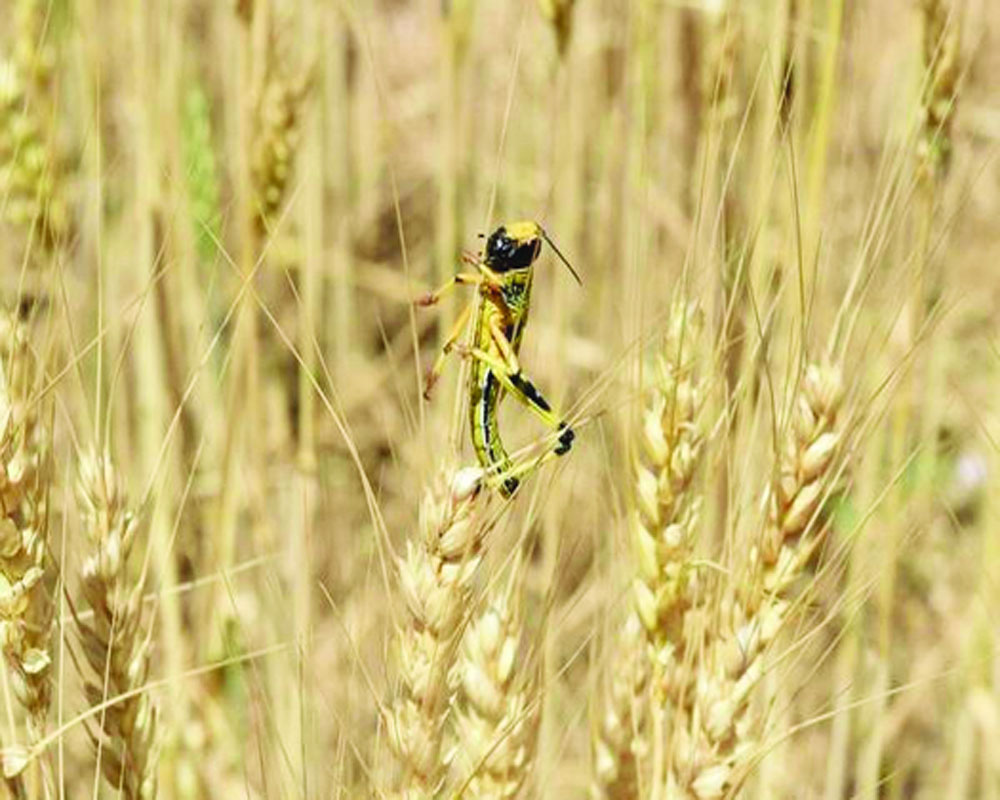Locusts can destroy standing crops and devastate livelihoods of people in the agricultural supply chain within days
It never rains but it pours. Even as India is desperately battling the combined impact of the Coronavirus, the Amphan cyclone and an economic emergency at one go, we have been “swarmed” by more misfortune. Sixteen districts of Rajasthan, 17 of Uttar Pradesh and the Nimar-Malwa region of Madhya Pradesh have reported one of the worst locust attacks in two decades. There are fears that India’s farm crisis could deepen further as the swarms, that can travel up to 130 km in one day, could head to Gujarat, Punjab, Haryana and Delhi, devouring everything in their wake. This is the second wave of the dreaded pests to hit the country in less than three months as the first one, which devastated crops worth crores, hit India in December-February. Locusts pose a major threat to a country’s food security as one swarm, which contains about 40 million insects, can devour the same amount of food in one day that 35,000 people, 20 camels or six elephants eat in 24 hours! Hence, locusts can destroy standing crops and devastate livelihoods of people in the agricultural supply chain within days, making them one of the most dreaded enemies of farmers. And coming at a time when an already beleaguered farm sector is trying to cope with the impact of the Corona lockdown and an exodus of labour, this will be the proverbial last straw. To put things in perspective, if the current swarms are not controlled, the standing crops of pulses worth around Rs 8,000 crore in Madhya Pradesh could be destroyed and so could the crops of cotton, chilli, fruits and vegetables in the heartland States.
India is not new to locust attacks but what is new is the shift in their swarming pattern. Earlier they used to leave by November but this time, in the first wave of the attack, the swarms stayed on till February. Scientists are attributing this aberration to climate change. Last year, the monsoon started six weeks ahead of time in western India and lasted till November instead of the usual September/October, creating perfect breeding conditions. In the current scenario, too, climate change-induced unseasonal rain or frequent cyclones are being considered the main reasons for the infestations. The pests have attacked 60 countries in two major continents, comprising an area of 30 million sq km. This aerial invasion highlights the urgent need for global cooperation and evolving cross-border templates to deal with environment-related challenges.
(Courtesy: The Pioneer)








 OpinionExpress.In
OpinionExpress.In















Comments (0)